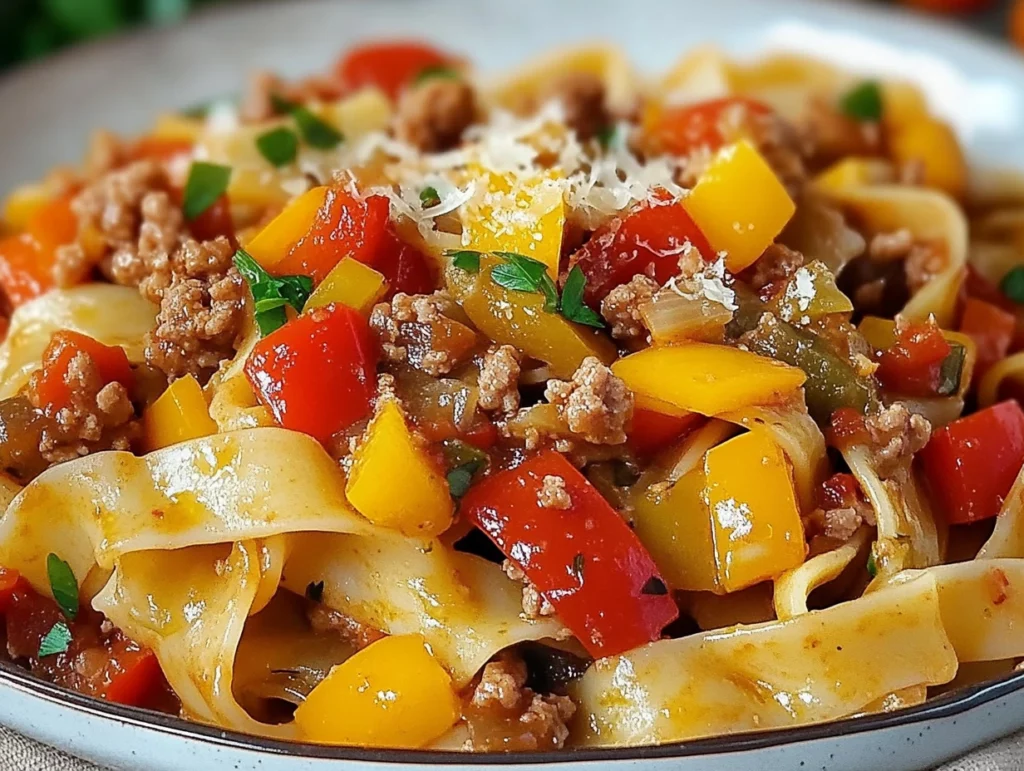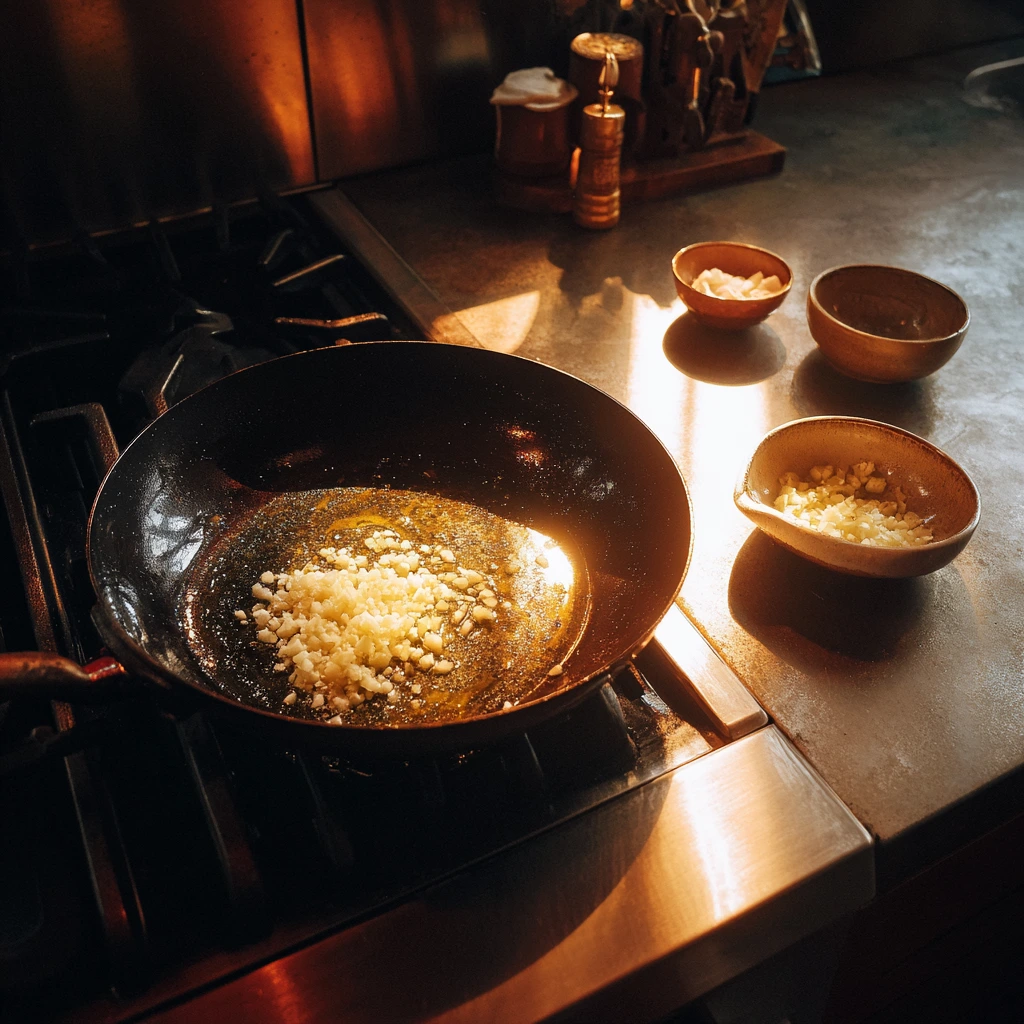If you’re a fan of pasta with a bit of spice, this Italian Drunken Noodles recipe is sure to become a new favorite in your kitchen! Inspired by the classic “drunken noodles” found in Thai cuisine, but with a unique Italian twist, this dish offers a flavorful sauce that is both tangy and savory, without any alcohol involved. Whether you’re craving a hearty weeknight dinner or need something quick to impress guests, this recipe is perfect for any occasion.
I love making this dish when I’m in the mood for something comforting yet exciting. The balance of spicy red pepper flakes, rich tomatoes, and the deep umami from balsamic vinegar creates a sauce that beautifully coats the noodles. It’s a simple yet robust meal that packs a punch of flavor.
The best part? You don’t need to be a professional chef to pull this off. It’s so easy to make, with just a handful of ingredients, and the entire meal comes together in under 30 minutes. Plus, you can tweak it to suit your taste, whether you want it spicier or milder. Let’s dive in and get started!
Ingredients for Italian Drunken Noodles (Non-Alcoholic)
For the noodles:
12 oz spaghetti (or your preferred noodle)
Water for boiling
Salt for pasta water
For the sauce:
2 tbsp olive oil
3 cloves garlic, minced
1 small onion, diced
1 can (14.5 oz) crushed tomatoes
1 tbsp tomato paste
1 tsp red pepper flakes (adjust to taste)
1 tsp dried oregano
1 tsp dried basil
1 cup vegetable broth (non-alcoholic)
1 tbsp balsamic vinegar
Salt and pepper to taste
For the garnish:
Fresh basil leaves, chopped
Grated Parmesan cheese (optional)
Step 1: Cook the Noodles
Start by bringing a large pot of salted water to a boil. The salt in the water will help season the noodles while they cook. Once the water is bubbling, add the spaghetti (or your preferred type of noodle) and cook according to the package instructions until al dente. This typically takes about 8-10 minutes, but check the pasta for doneness before draining it.
Once the noodles are perfectly cooked, drain them in a colander and set them aside for now. You’ll want to keep them hot, so don’t worry if you have a little steam rising from the noodles—that’s just the heat you need to absorb all the sauce later on.
Step 2: Prepare the Sauce
While your pasta is cooking, it’s time to get the sauce ready. Heat 2 tablespoons of olive oil in a large skillet over medium heat. Olive oil is perfect for this dish, adding a rich, slightly fruity flavor that complements the other ingredients.
Once the oil is hot, add 3 cloves of minced garlic and 1 small diced onion. Sauté them for about 2-3 minutes, or until the garlic is fragrant and the onion becomes soft and translucent. This is where the magic happens—garlic and onion form the aromatic base for many Italian dishes, and this one is no different. It smells incredible already!
Step 3: Add the Tomatoes and Seasonings
Now, it’s time to build the flavor of the sauce. Add the entire can of crushed tomatoes (14.5 oz) along with 1 tablespoon of tomato paste. Stir everything together to combine the tomato paste with the crushed tomatoes.
Next, it’s time to add the seasonings. Sprinkle in 1 teaspoon each of dried oregano and dried basil for that signature Italian flavor. Add 1 teaspoon of red pepper flakes, or more if you like your dishes spicy. Season with salt and pepper to taste, keeping in mind that the pasta water may have added some salt already. Let this simmer together for 5-7 minutes, allowing the tomatoes to soften and the flavors to meld together. The sauce should start thickening, making your kitchen smell wonderful.
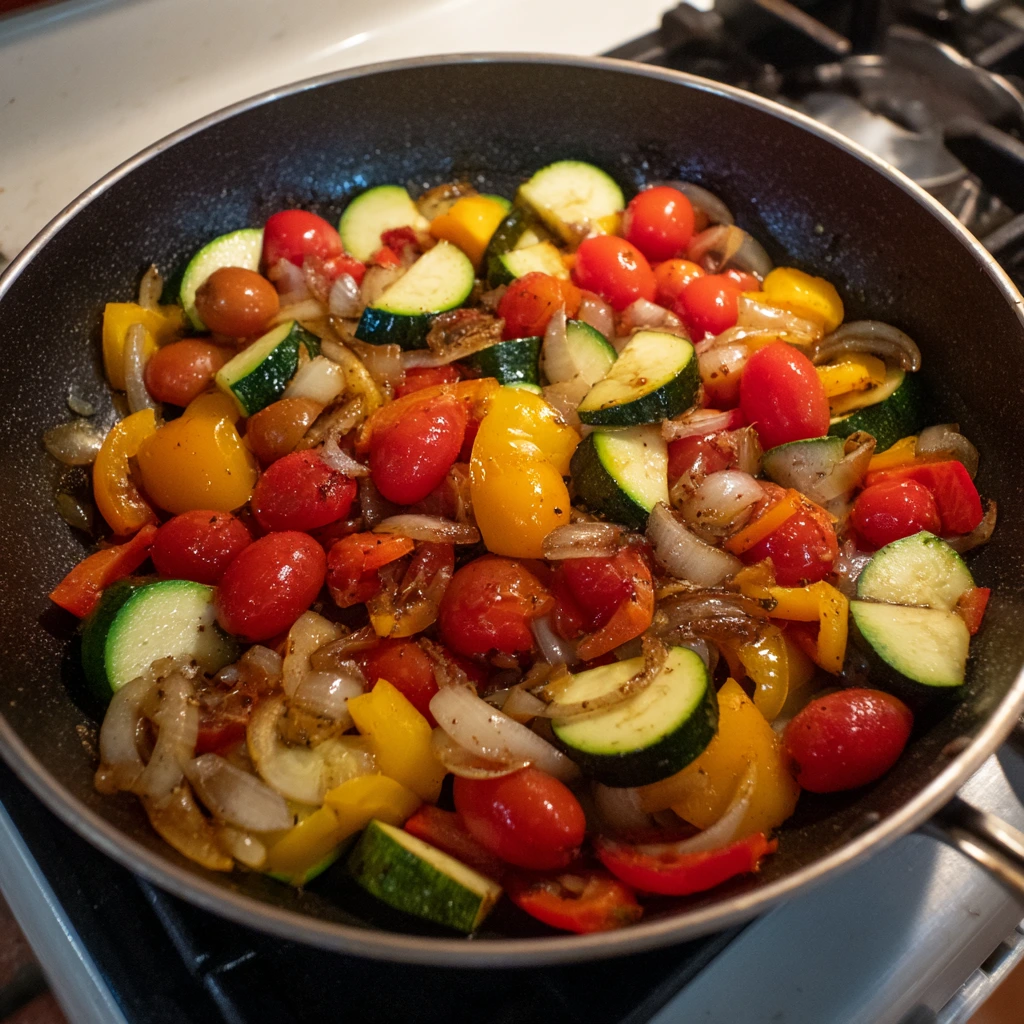
Step 4: Add the Broth and Vinegar
Once the tomatoes and seasonings have blended together, it’s time to bring in the vegetable broth and balsamic vinegar. Pour in 1 cup of vegetable broth, making sure to stir everything together to combine. This will loosen up the sauce, making it rich and silky while still holding onto all those bold flavors.
Then, add 1 tablespoon of balsamic vinegar. This vinegar adds a tangy sweetness that balances out the acidity of the tomatoes and enhances the depth of the sauce. Allow the mixture to simmer for another 5-10 minutes, stirring occasionally. As it simmers, the sauce will thicken just a little, and all those amazing flavors will come together in a beautifully balanced way.
Step 5: Toss the Noodles
Now for the fun part! Add your freshly cooked pasta to the skillet with the sauce. Use tongs or a spoon to toss the noodles in the sauce, making sure they’re well coated. Let the noodles simmer in the sauce for about 2-3 minutes, allowing them to absorb some of the rich tomato sauce. This step helps the noodles soak up all the flavor and gives them that extra burst of deliciousness.
Step 6: Garnish and Serve
After the noodles have had a chance to mingle with the sauce, remove the skillet from the heat. It’s time to serve! Plate the noodles and garnish them with freshly chopped basil leaves for a pop of freshness. If you’re feeling extra indulgent, a sprinkle of grated Parmesan cheese will elevate the dish even more.
Serve this Italian Drunken Noodles immediately, while the flavors are fresh and vibrant. I recommend pairing it with a simple salad or some crusty bread to soak up any leftover sauce
Step 7: Tips for Perfecting the Noodles
When it comes to pasta, there are a few things to keep in mind to get the perfect texture and flavor. Here are a few tips for making sure your noodles are always just right:
Salt your pasta water: You’ve probably heard this before, but it really makes a difference! Adding salt to the water helps to season the noodles from the inside out, making them tastier. A good rule of thumb is to add about 1-2 tablespoons of salt for every 4-6 cups of water.
Don’t overcook the pasta: The noodles should be cooked al dente, meaning they should have a slight firmness when bitten into. Remember, the pasta will continue to cook in the sauce for a few minutes, so it’s okay to undercook it by just a minute or so. This helps prevent mushy noodles!
Save some pasta water: Before draining your pasta, save a cup of pasta water. If your sauce ends up being too thick, you can add a bit of this starchy water to thin it out and help the sauce cling to the noodles.
Step 8: Adjusting the Heat and Flavor
One of the best things about this recipe is how customizable it is. You can adjust the heat level and flavor profile to suit your taste.
Spice Level: If you love heat, feel free to increase the red pepper flakes. A little extra kick can take this dish to the next level! On the other hand, if you prefer something milder, you can reduce the red pepper flakes or even omit them altogether. Just remember that the beauty of this dish is in the balance, so taste as you go and adjust to your preference.
Add Freshness with Lemon or Vinegar: If you want to add a bit of brightness to the dish, try squeezing a bit of lemon juice over the noodles before serving. A quick splash of lemon can help cut through the richness of the sauce. You could also experiment with using a different type of vinegar, like red wine vinegar, for a slightly different taste.
Herb Variations: While basil and oregano are traditional, don’t be afraid to experiment with other herbs. Thyme, parsley, or even a bit of rosemary could add some interesting flavors. Fresh herbs will give the dish a lively and vibrant taste, so feel free to get creative!
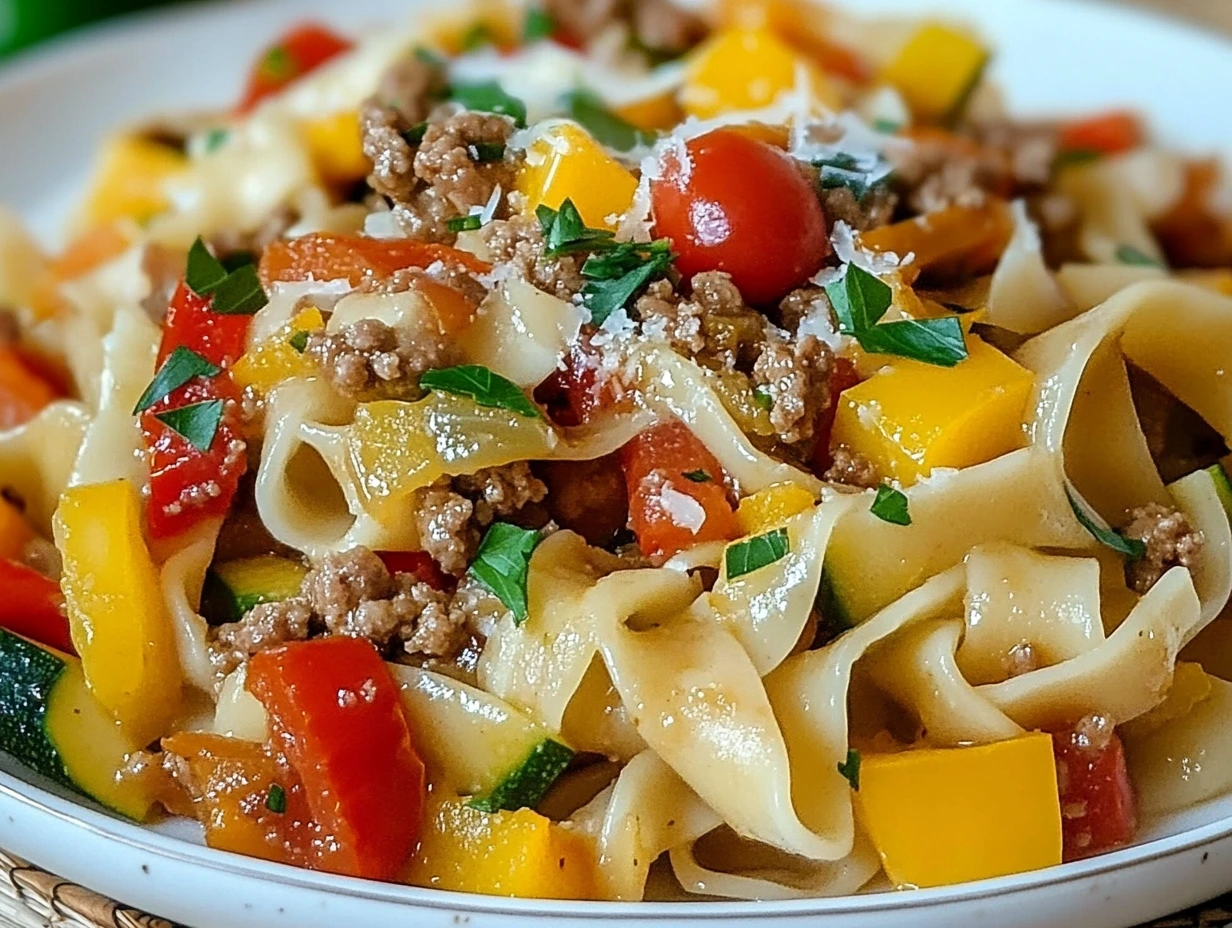
Step 9: Making It Vegan or Dairy-Free
If you’re making this dish for someone who’s vegan or avoiding dairy, it’s easy to make it completely plant-based. Here are a couple of options to help you achieve that:
Skip the Parmesan: The Parmesan cheese can be omitted or swapped for a plant-based version if you’re keeping the dish vegan. Nutritional yeast is a great alternative if you’re looking for a cheesy flavor without the dairy, and it’s packed with vitamins too!
Check the broth: While vegetable broth is typically vegan-friendly, be sure to check the label. Some store-bought broths contain hidden animal products like dairy or chicken stock. It’s always a good idea to verify the ingredients if you’re serving someone with dietary restrictions.
Step 10: Additional Toppings and Garnishes
For an extra layer of flavor and texture, you can add a few garnishes that will elevate this dish even more. Here are some ideas to try:
Crushed Red Pepper Flakes: If you really enjoy spice, sprinkle a few more crushed red pepper flakes on top right before serving. This gives the dish an extra heat boost and a little pop of color.
Roasted Vegetables: For a heartier meal, toss in some roasted vegetables like zucchini, bell peppers, or cherry tomatoes. You can roast them in the oven while you’re preparing the pasta and sauce, then mix them in for added flavor and texture.
Olives or Capers: If you want to add a briny punch, try tossing in some Kalamata olives or capers. These ingredients will complement the tangy balsamic vinegar and crushed tomatoes perfectly.
Toasted Pine Nuts: For a bit of crunch, sprinkle toasted pine nuts on top of the noodles. Their nutty flavor pairs wonderfully with the rich tomato sauce.
Step 11: Serve It With a Side Dish
While this Italian Drunken Noodles is a delicious and filling meal on its own, it can also pair beautifully with a variety of side dishes. Here are a few ideas to round out the meal:
A Simple Salad: A fresh, crisp salad with a tangy vinaigrette can be the perfect contrast to the rich, spicy noodles. Try a mixed green salad with arugula, cherry tomatoes, and a light lemon dressing. You can even add some shaved Parmesan (if you’re not avoiding dairy) for an extra burst of flavor.
Garlic Bread: It’s hard to go wrong with garlic bread as a side. The crunchy, buttery bread is perfect for mopping up the extra sauce on your plate. Make sure to use a thick, hearty bread like a baguette or ciabatta.
Roasted Potatoes: For a heartier side, roasted potatoes with herbs would complement the noodles nicely. The crispy potatoes with a bit of rosemary and garlic will balance out the richness of the sauce.
FAQ and Conclusion for Italian Drunken Noodles (Non-Alcoholic)
Now that we’ve covered all the steps and tips to make your Italian Drunken Noodles, let’s dive into some frequently asked questions! These questions will help clarify a few things, troubleshoot any issues you might encounter, and offer additional advice so that you can confidently prepare this dish every time. After that, I’ll wrap things up with a conclusion, giving you some final thoughts to inspire your cooking journey.
FAQ Section
1. Can I use a different type of pasta for this recipe?
Yes! While spaghetti works wonderfully in this dish, feel free to swap it out for any pasta you prefer. Linguine, penne, fettuccine, or even gluten-free pasta would work just as well. Just keep in mind that cooking times may vary, so adjust accordingly based on the type of pasta you choose.
2. How can I make the sauce thicker if it’s too watery?
If you find that your sauce is too thin, you can easily thicken it by simmering it for a bit longer to reduce the liquid. Alternatively, you could add a small amount of tomato paste (half a tablespoon) or even a tablespoon of cornstarch mixed with water to help thicken the sauce. Let it simmer for a few extra minutes until you get your desired consistency.
3. Is this dish spicy?
The recipe calls for red pepper flakes, which do add some heat, but the level of spice is completely adjustable to your taste. If you like a mild dish, you can reduce or eliminate the red pepper flakes. If you enjoy spicier food, feel free to add more! The balance of sweetness from the balsamic vinegar and richness from the tomatoes helps to mellow out the heat, so don’t be afraid to experiment.
4. Can I make this dish ahead of time?
Yes! You can make the sauce ahead of time and store it in the fridge for up to 3 days. When you’re ready to serve, simply reheat the sauce on the stove and toss it with freshly cooked noodles. This is a great time-saver if you’re preparing for a busy week or need a quick meal for later.
5. Can I freeze the sauce for later?
Definitely! This sauce freezes very well. Just make sure to let it cool completely before transferring it to an airtight container or freezer bag. It will stay good for up to 3 months in the freezer. When you’re ready to use it, thaw it in the refrigerator overnight and reheat on the stove. Freshly cooked pasta will make the perfect pairing once it’s ready!
6. How do I make the dish creamier?
If you prefer a creamy version of this dish, try adding a splash of heavy cream or coconut milk at the end of cooking. This will add richness and smoothness to the sauce. Start with a tablespoon or two, and stir it in until you get the desired creamy texture.
7. Can I use a different type of vinegar instead of balsamic?
Yes! While balsamic vinegar adds a deep, tangy sweetness to the sauce, you can experiment with other types of vinegar if you prefer a different flavor profile. Red wine vinegar or apple cider vinegar would work well, though the taste might differ slightly. Just keep in mind that balsamic vinegar has a unique richness, so if you’re substituting, you might want to adjust the sugar levels or add a pinch of sweetener to balance it out.
Conclusion: Why You’ll Love Italian Drunken Noodles
Now that you’ve learned all the steps, tips, and tricks for making these delicious Italian Drunken Noodles (Non-Alcoholic), it’s time to get cooking! This dish is a perfect blend of bold flavors, from the tangy crushed tomatoes to the savory depth of balsamic vinegar. The spicy kick from the red pepper flakes adds just the right amount of heat, and the fresh basil garnish brings everything together for a fresh finish.
The best part is how flexible the recipe is. You can adjust it to suit your taste—whether you like it spicier, creamier, or even vegan-friendly. Plus, it’s an easy, quick meal that comes together in under 30 minutes, making it ideal for busy weeknights or casual dinner parties.
Whether you’re serving it as a weeknight dinner or as part of a larger Italian-themed meal, these Italian Drunken Noodles are sure to impress. Don’t forget to play around with the recipe and make it your own—add some roasted vegetables, switch up the herbs, or sprinkle on extra Parmesan for a truly custom experience.
Print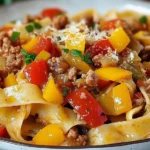
Italian Drunken Noodles (Non-Alcoholic)
- Author: Andrew Recipes
Description
These Italian Drunken Noodles are a flavorful, satisfying dish inspired by the bold flavors of Italian cuisine, but without any alcohol. The rich tomato sauce is spiced up with red pepper flakes and aromatic herbs like oregano and basil, creating a zesty base that perfectly complements the al dente pasta. A touch of balsamic vinegar adds a hint of sweetness and depth, while the vegetable broth ensures the sauce is silky smooth and packed with savory goodness. Finished off with a sprinkle of fresh basil and optional Parmesan cheese, this dish brings the comforting taste of Italy to your table in just 30 minutes. Ideal for a quick weeknight dinner or a delicious weekend meal, these noodles are sure to be a hit with everyone!
Ingredients
For the noodles:
12 oz spaghetti (or your preferred noodle)
Water for boiling
Salt for pasta water
For the sauce:
2 tbsp olive oil
3 cloves garlic, minced
1 small onion, diced
1 can (14.5 oz) crushed tomatoes
1 tbsp tomato paste
1 tsp red pepper flakes (adjust to taste)
1 tsp dried oregano
1 tsp dried basil
1 cup vegetable broth (non-alcoholic)
1 tbsp balsamic vinegar
Salt and pepper to taste
For the garnish:
Fresh basil leaves, chopped
Grated Parmesan cheese (optional)
Instructions
1️⃣ Cook the noodles: In a large pot, bring salted water to a boil. Add the spaghetti and cook according to the package instructions until al dente. Drain and set aside.
2️⃣ Prepare the sauce: Heat olive oil in a large skillet over medium heat. Add the minced garlic and diced onion. Sauté for about 2-3 minutes until fragrant and the onion is translucent.
3️⃣ Add the tomatoes and seasonings: Add the crushed tomatoes and tomato paste to the skillet. Stir to combine. Then, add red pepper flakes, oregano, basil, and season with salt and pepper to taste. Allow the sauce to simmer for 5-7 minutes.
4️⃣ Add the broth and vinegar: Pour in the vegetable broth and balsamic vinegar, stirring to combine. Bring the sauce to a gentle simmer and cook for another 5-10 minutes, letting the flavors meld together and the sauce thicken slightly.
5️⃣ Toss the noodles: Add the cooked spaghetti to the sauce and toss to coat the noodles evenly with the sauce. Let it simmer together for 2-3 minutes to allow the noodles to absorb some of the sauce.
6️⃣ Garnish and serve: Remove the skillet from heat. Serve the noodles on plates, garnished with fresh chopped basil and a sprinkle of Parmesan cheese, if desired. Serve immediately!
Notes
You can adjust the heat level by increasing or decreasing the red pepper flakes.
For added richness, a splash of heavy cream can be added at the end for a creamy version.
To make this dish vegan, skip the Parmesan or use a plant-based alternative.
